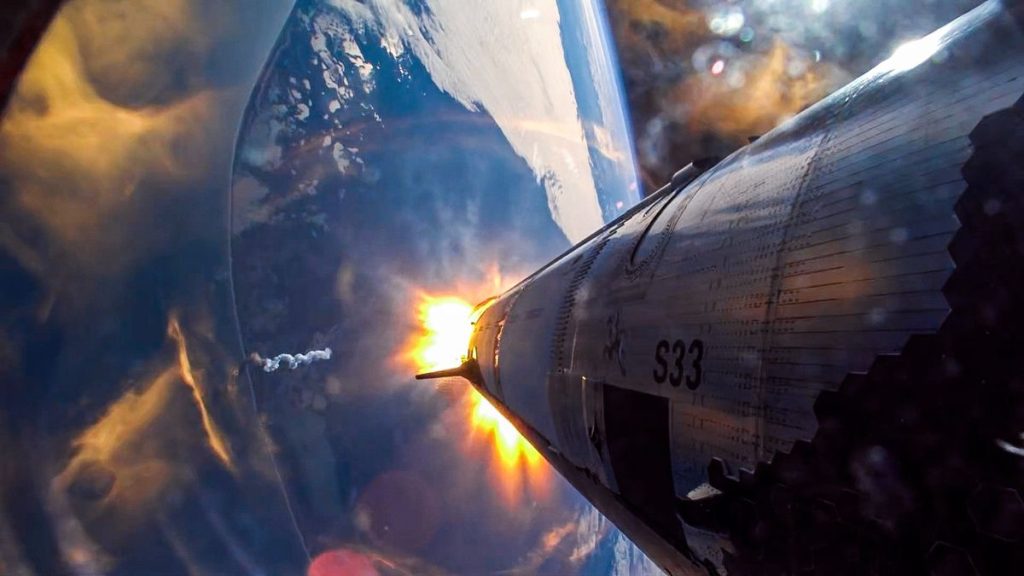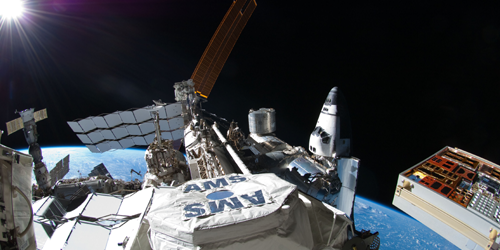Falling space debris is a growing worry for aircraft, new research suggests – Space.com

Starship 7 leftovers arc into the Atlantic near the Turks and Caicos Islands.Image credit: Dean OlsonUncontrolled space debris reentries are of growing concern.The prospect of leftovers from space hotfooting into the Earth’s atmosphere can create a collision risk with aircraft in flight.While the probability of a strike is low, the consequences could be catastrophic.Mishap investigationRecently, the Federal Aviation Administration (FAA) required SpaceX to perform a mishap investigation into the loss of their Starship vehicle during the private firm’s launch operations on January 16 from the Texas-based “SpaceX Starbase.”Starship 7 leftovers arced into the Atlantic near the Turks and Caicos Islands, with reported debris being found on land.A main propellant tank of the second stage of a Delta 2 launch vehicle landed near Georgetown, Texas in January 1997.Image credit: NASA Orbital Debris Program OfficeDuring the Starship 7 destructive event, the FAA activated a Debris Response Area and briefly slowed aircraft outside the area where space vehicle debris was falling or stopped aircraft at their departure location.Several aircraft requested to divert due to low fuel levels while holding outside impacted areas, said the FAA in a statement, called preliminary and subject to change.Image credit: LeoLabs/McKnightNew researchThat incident underscores the output from new research – “Airspace closures due to reentering space objects” – published in Scientific Reports, an open access journal.The research points out that the risk is rising due to increases in both reentries and flights.“In response, national authorities may choose to preemptively close airspace during reentry events; some have already done so,” explains the paper authored by Canada-based researchers.Airspace“In short, there is a 26 percent chance of an uncontrolled space debris reentry in busy airspaces such as the Northeastern United States or Northern Europe each year,” said Ewan Wright at the University of British Columbia, Vancouver, Canada.Number of aircraft in the sky throughout the first day of each month in 2023, sampled hourly. In general, the number of aircraft peaks in the Northern Hemisphere summer, though other periodic effects such as the day of the week and year (e.g., New Year’s Day) will also affect the number.Image credit: Wright, et al. “Authorities may choose to close airspace in response, as occurred in Europe in 2022, but this has economic impacts and further safety consequences,” Wright told Inside Outer Space.Wright, along with colleagues Aaron Boley and Michael Byers, write in their paper that, for a given reentry, the collision risk in the underlying airspace increases with the air traffic density.They point out that the economic consequences of flight delays also increase should that airspace be closed.Dilemma“This situation puts national authorities in a dilemma—to close airspace or not—with safety and economic implications either way. The collision risk could be mitigated if controlled reentries into the ocean were required for all missions,” the researchers contend.However, over 2,300 rocket bodies are already in orbit and will eventually reenter in an uncontrolled manner.Image of spent rocket body captured by commercial debris inspection demonstration satellite, Active Debris Removal by Astroscale-Japan (ADRAS-J).Image credit: Astroscale-Japan “Airspace authorities will face the challenge of uncontrolled reentries for decades to come,” the research team concludes. For access to the paper – “Airspace closures due to reentering space objects” – go to:https://www.nature.com/articles/s41598-024-84001-2Dear Professor David, there was an old idea to capture all orbiting ‘Space Junk’, by making a very big foam ball, that could be positioned into the path of the space junk, to impact it, and become embedded in it, after which the ball is dropped into the ocean. That project never happened, apparently because catching something moving six times as fast as a bullet would just explode a foam ball. Anyway, there is a new wrapping paper from 3M Corporation, ‘3M Corp Cushion Wrap Paper, invented by their innovation scientist Tom Corrigan, which is a roll of recycled paper, with origami cuts in it, which enables us to wrap an object for mail delivery, and it expands and locks into a strong structure. It’s intended as as a replacement for Styrofoam packing material. Mr. Corrigan made a YouTube video, where he rolled up a paper roll of this thing, into big, strong ball. So, what if we used that thing to wind this paper up, like making a ball of string, in orbit, with a robot doing that that also wets the developing layers with water as it assembles this ball. The combination of water and paper freezes and creates ‘Papercrete’ which is nearly indestructible, so that when high speed space junk hits it, their impact energy is dissipated by this structuring, and contains the debris. Also, what if we make this thing out of Aluminum sheets, so that when wound up into a giant ball, that ‘Cold-welding’ phenomenon of outer space subzero temperature occurs, to make all of this structural arrangement spot-welding every part of it into one unit, which could do the same thing? Finally, if we already have thousands of tons of materials up in orbit already, why not take all of the amassed space junk materials and melt them down to recast as structural parts for the next larger International Space Station construction, to save billions of dollars that would transporting tons of materials up from the Earth otherwise. EOJ
Name (required)
Mail (will not be published) (required)
Website
Submit Comment
Δ
To purchase the book please click here
Source: https://www.leonarddavid.com/incoming-space-debris-growing-worry-for-aircraft/






